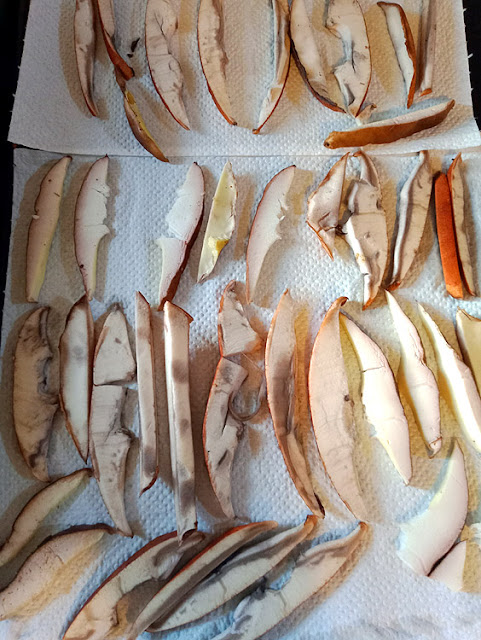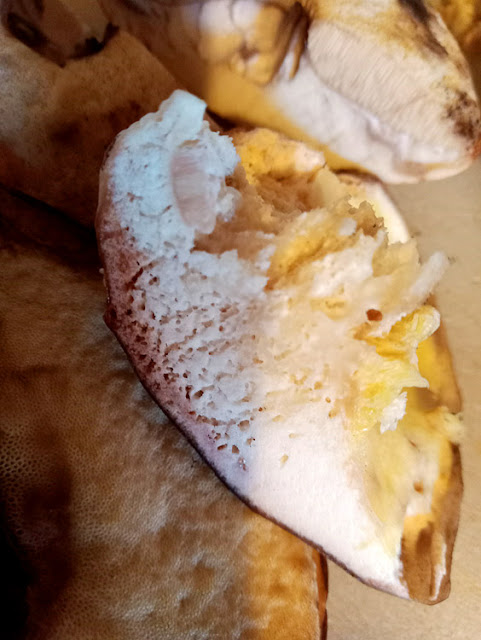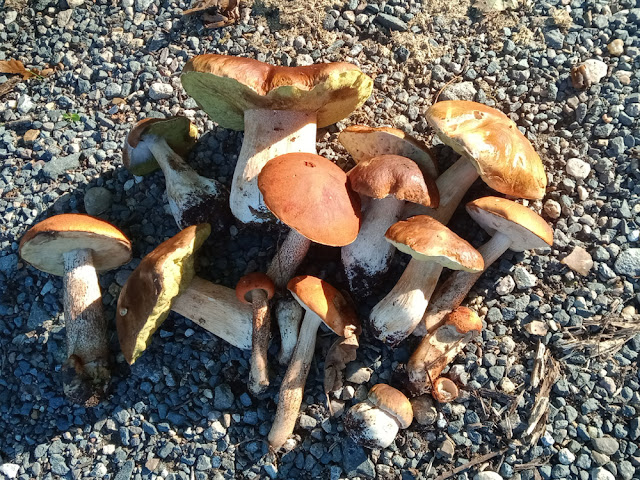 |
| Edible Ceps and Orange Oak Boletes prepared for cooking. |
Ceps (also known as porcini in Italian and cèpes in French) start popping up in the forests in October. Many locals collect their own, and those with a license to do so collect them commercially, so you can buy them in the market during the season. Bay-brown Bolete retails for about €600 per kilo. Depending on the weather, some years they are abundant, some years they are scarce.
 |
| Maggot damage in an Edible Cep. I chucked this mushroom. |
There are three main species that you will find in the Touraine Val de Loire, closely related, that are the most prized -- Edible Cep Boletus edulis (Fr. Cèp de Bordeaux); Bay-brown Bolete Xerocomus badius (Fr. Bolet bai); and Dark Bolete Boletus aereus (Fr. Tête de negre). There are other related species, also edible, but generally referred to as boletes, such as Orange Oak Bolete Leccinum auranticum (Fr. Bolet orangé), abundant and well worth eating, but usually just used to bulk out the better species.
 |
| Maggot damage in an Edible Cep. If it is only in the 'sponge' that's fine, as you will be removing it anyway. |
To prepare them to eat, brush the caps off, remove the stems and discard (or use in a dish where they will be pureed with other things), check for slugs. Remove the spongey pores and tubes under the cap by pushing at it gently with your thumb. This sponge is full of water and not very nice to eat.
 |
| If the maggot damage comes all the way out at the top, discard the mushroom. |
Slice the mushrooms and discard any bits that have maggots. Spread out in a single layer on a tea towel or paper towel and leave overnight. This dries them out a bit and means they don't produce too much water when cooked. At this point they can be bagged and frozen, dried on low heat in the oven or in a dehydrator, or cooked immediately.
 |
| A nice haul of ceps and boletes from the forest. |
To cook fresh or from frozen, melt a knob of butter and a dash of olive oil in a frying pan on medium high heat. Add the mushrooms to the pan, along with a pinch of salt, some ground pepper and crushed garlic. Fry for 3-4 minutes, tossing or stirring frequently. Tip off any liquid the mushrooms have released. You can add some cream and chopped parsley at this point, and serve with grilled steak.
 |
| Left Edible Cep Boletus edulis (Fr. Cepe de Bordeaux), right Orange Oak Bolete Leccinum aurantiacum (Fr. Bolet orangé). |

No comments:
Post a Comment